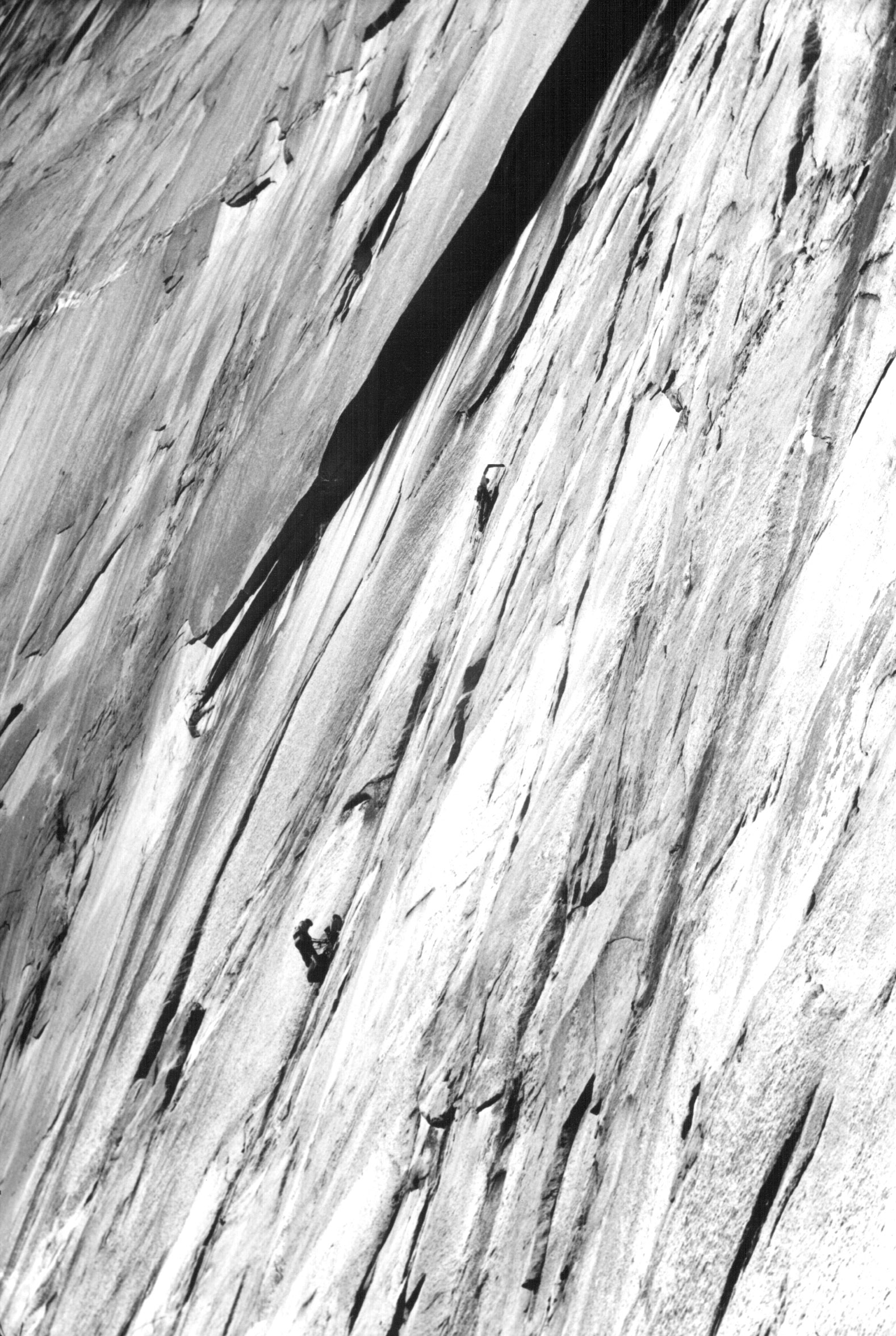|
“Nothing contributes more to Yosemite’s preeminent grandeur than a
3,000-foot white monolith standing at the gate to the Valley:
El Capitan
. ‘The Captain’ it
indeed is, for it commands the attention and respect of everyone
entering
Yosemite
. Its light igneous rock is
called
El Capitan
granite. From the south to
the west buttress, four great routes lie on this fine, hospitable
granite. But the southeast
face is different, for the granite is displaced in the center of that
wall by brittle black diorite. This
diorite forms a crude map of the North American continent, whence the
name, ‘North America Wall.’
“Because of its grim aspect, this dark wall was left untouched
while the more obvious and esthetic lines on the southwest face were
climbed. But the inevitable
attraction of a great un-climbed wall finally prevailed, and in October
of 1963, Glen Denny and I made several probes, reaching a
high point
of 600 feet. The
aid-climbing was unusually difficult.
Promising cracks proved barely usable.
On the third pitch nearly every piton was tied off short.”
(Royal Robbins, AAJ, 1965)
In this photograph Denny leads the fourth pitch, belayed by
Robbins. Exploration of the
North America Wall had begun. We
returned in the fall of 1964 for an all-out effort.
“We half-expected (and half-hoped) others would do the climb
before we returned. But when
Tom and I arrived back in
Yosemite
the wall stood somber and still virgin – waiting.
We all felt similarly about the climb – it was not an appealing
wall. It did not have the
elegance or majesty of the southwest face.
The treacherous dark rock, the difficulty of retreat due to great
overhangs and long traverses, the absence of a natural route, and
finally the apparent necessity for many bolts rendered us not happily
enthusiastic about the venture. A
large part of our individual selves did not want to attempt this face.
But another part was lured on by the challenge of the greatest
unclimbed rock wall in
North America
.” (RR, AAJ)
Roper commented on the North America Wall climb:
“If you assemble the four best rockclimbers in the country –
probably the world – and stick them onto a steep, unclimbed
Yosemite
cliff, you may not have too many stories to tell afterward.
On October 31, nine and a half days after starting, the quartet
had completed the most difficult rock climb ever done.
The exposure had been awesome - much more so than on the Nose or
the Salathé –
and the nailing difficulties unprecedented.
Mightily determined to avoid bolts (only thirty-eight were
placed), the team performed aid miracles and made wild pendulums and
traverses. The diorite,
fractured and lacking structural integrity, belied the fact that
Yosemite
usually had the best rock on the planet; loose flakes and strange cracks
presented special problems. It
had been hot at first; stormy later.
Still, all such things were expected, and the team simply dealt
with them one step at a time.” (Steve
Roper, Camp 4)
ON
THE NA WALL, the first reconnaissance by Royal Robbins, and Glen Denny
to 600 feet, October
1963. The ascent of the full
route took place one year later during 10 days of October 1964, by Robbins, Pratt, Chouinard, and Frost.
The North America Wall, El Capitan,
Yosemite Valley,
California.
|

